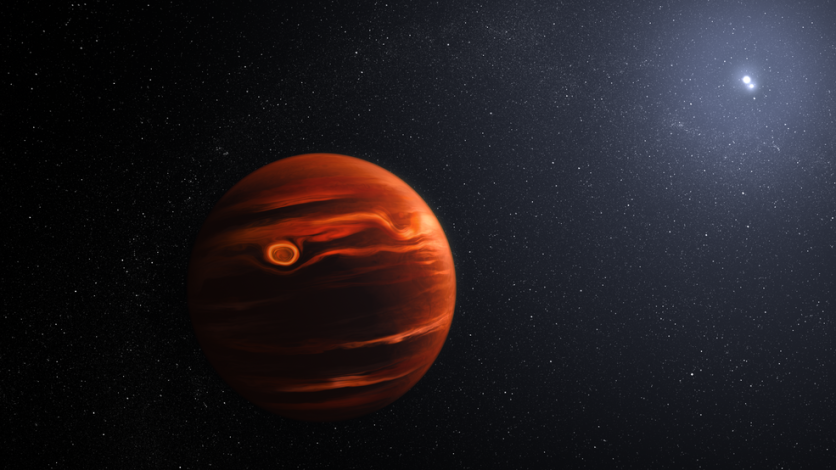NASA's James Webb Space Telescope has made a groundbreaking discovery by pinpointing silicate cloud features in the atmosphere of a distant planet.
The team of researchers, led by Brittany Miles from the University of Arizona, utilized the telescope's data to detect water, methane, carbon monoxide, and carbon dioxide in the planet's atmosphere, marking the largest number of molecules ever identified all at once on a planet outside our solar system.

The planet, known as VHS 1256 b, orbits two stars over a 10,000-year period and is located approximately 40 light-years away. It has low gravity compared to more massive brown dwarfs, which allows its silicate clouds to remain higher in its atmosphere where they can be detected.
Moreover, its skies are so turbulent because it is only 150 million years old, which is young in astronomical terms.
Silicate Clouds
The silicate clouds are located higher up in its atmosphere, where temperatures reach a scorching 1,500 degrees Fahrenheit. Within these clouds, the telescope detected both larger and smaller silicate dust grains, which are shown on a spectrum.
The finer silicate grains in its atmosphere may be similar to tiny particles in smoke, while the larger grains might resemble very hot, very small sand particles, according to co-author Beth Biller of the University of Edinburgh in Scotland.
The team sees these results as the first "coins" discovered in a field of study that is thought to contain a vast amount of data. Scientists are just starting to identify the contents, and additional research is needed to determine which grain sizes and shapes correspond to various kinds of clouds.
But NASA notes that no other telescope has ever found this many features for a single target at once.
The Near-Infrared Spectrograph (NIRSpec) and the Mid-Infrared Instrument (MIRI), two pieces of equipment on board the James Webb Space Telescope, were used by the researchers to collect the data known as spectra.
Instead of using the transit technique or a coronagraph to collect this data, the researchers were able to directly view the planet because it orbits its stars at such a great distance.
Webb's Early Release Science Program
The planet's age and distance from its stars suggest that it will continue to change and cool over billions of years. The skies may transition from cloudy to clear, and they will become colder over time.
The team observed VHS 1256 b as part of Webb's Early Release Science program, which aims to transform the astronomical community's ability to identify planets and the disks where they form.
This team, along with others, will continue to sort through Webb's high-resolution infrared data as there is still much to discover about VHS 1256 b in the months and years to come.
The team's findings were published in The Astrophysical Journal Letters.
Related Article : NASA James Webb Space Telescope's First Images Reveal Treasure Trove of Various Galaxies

ⓒ 2025 TECHTIMES.com All rights reserved. Do not reproduce without permission.




